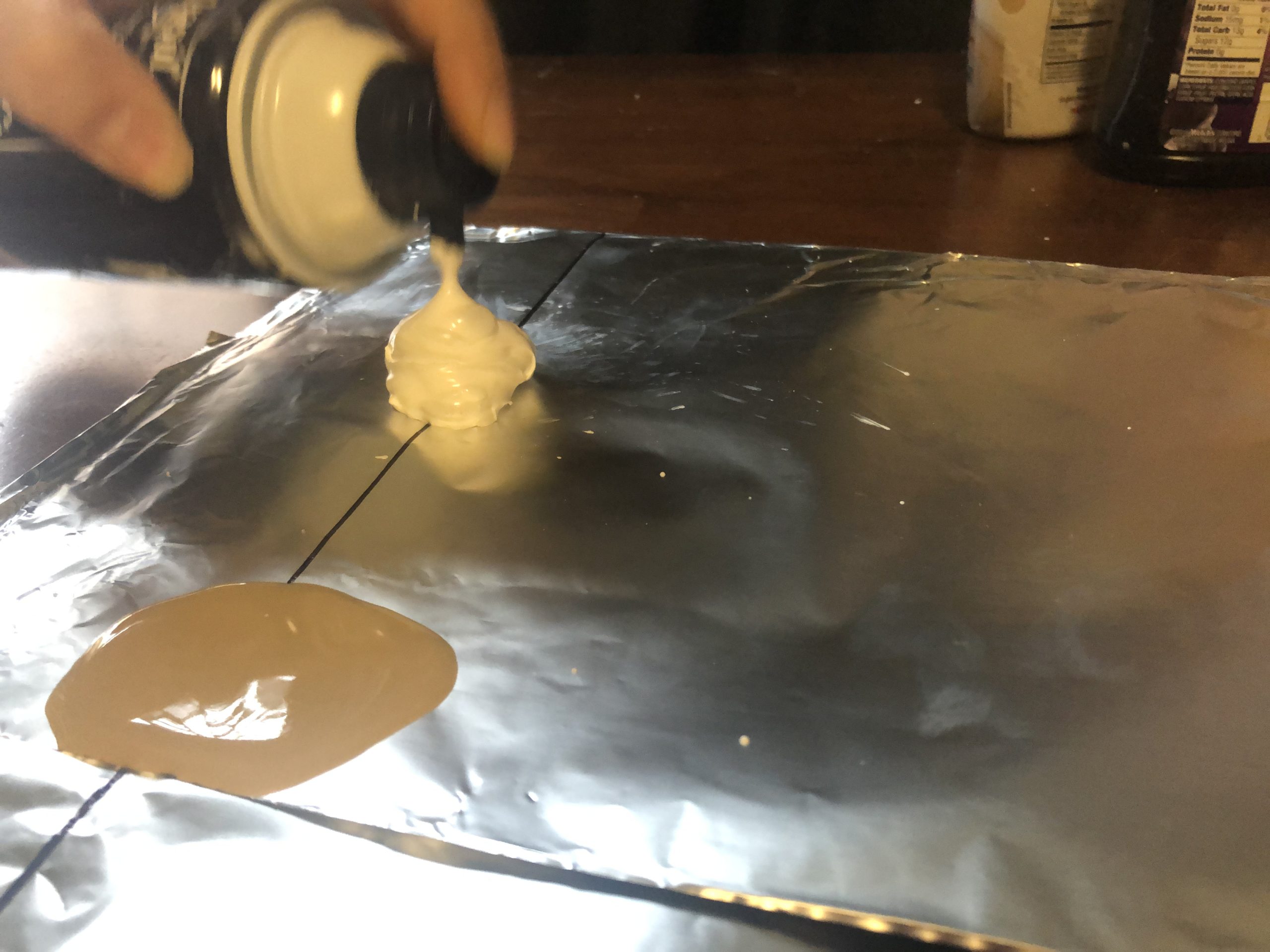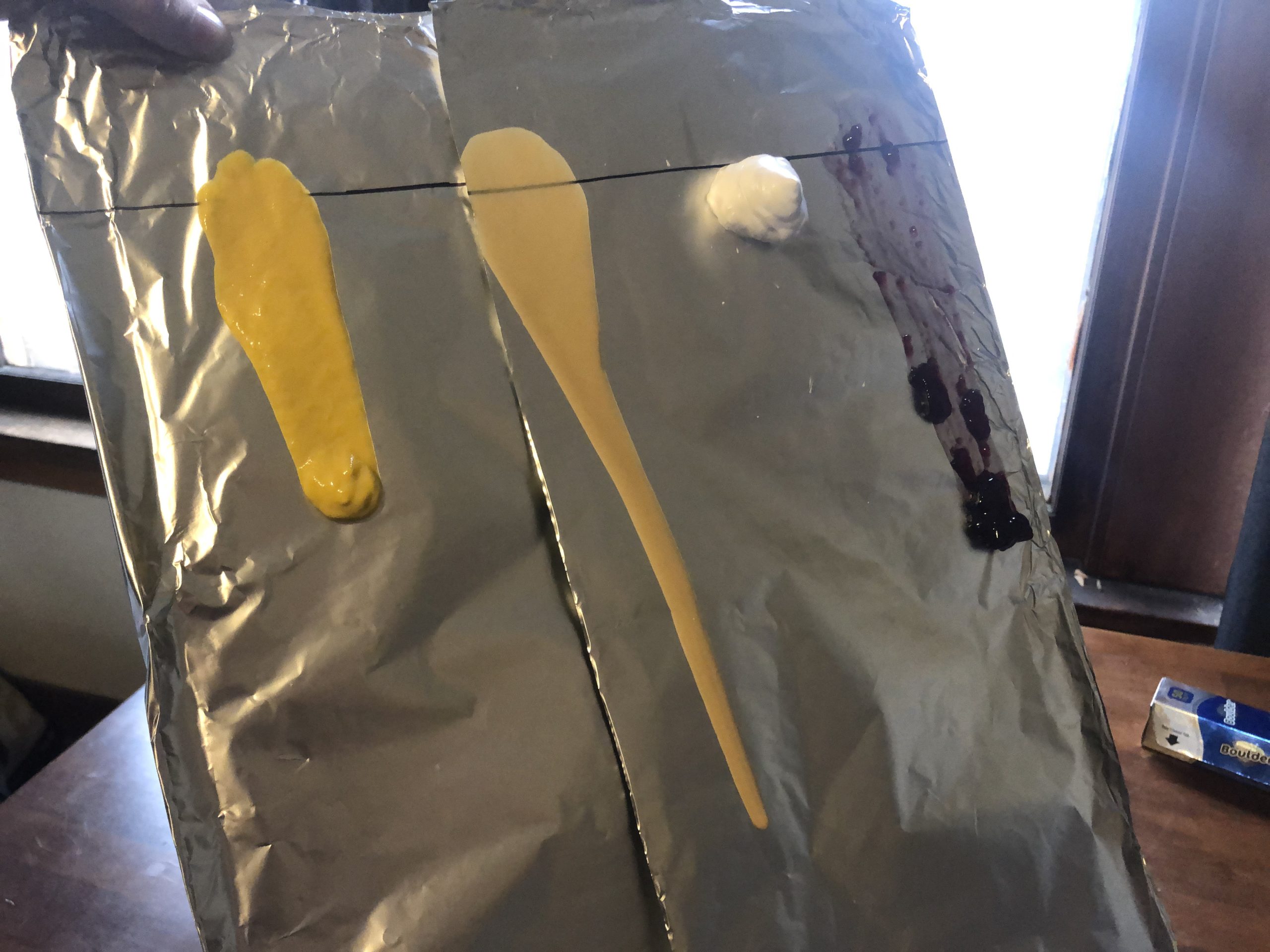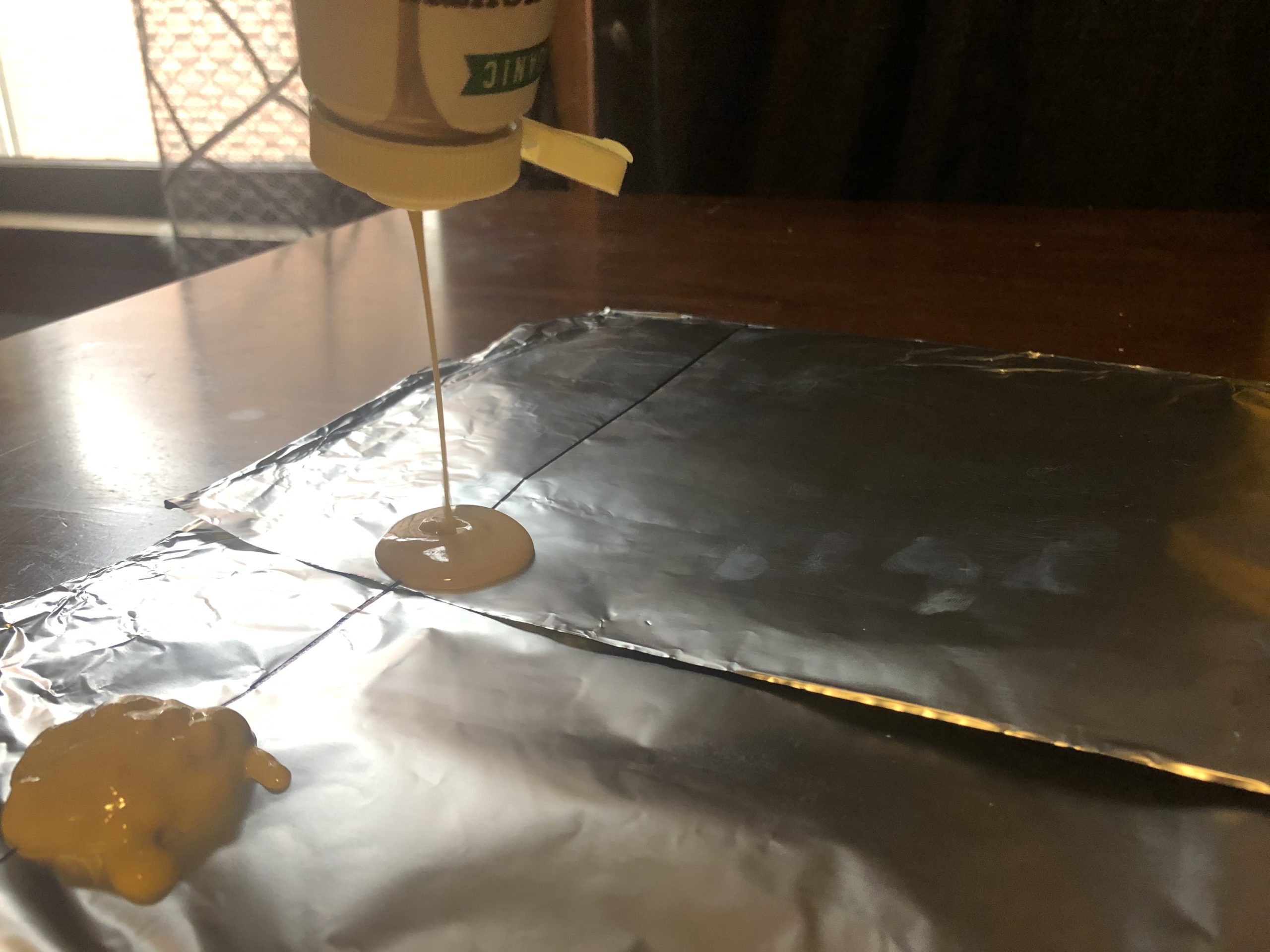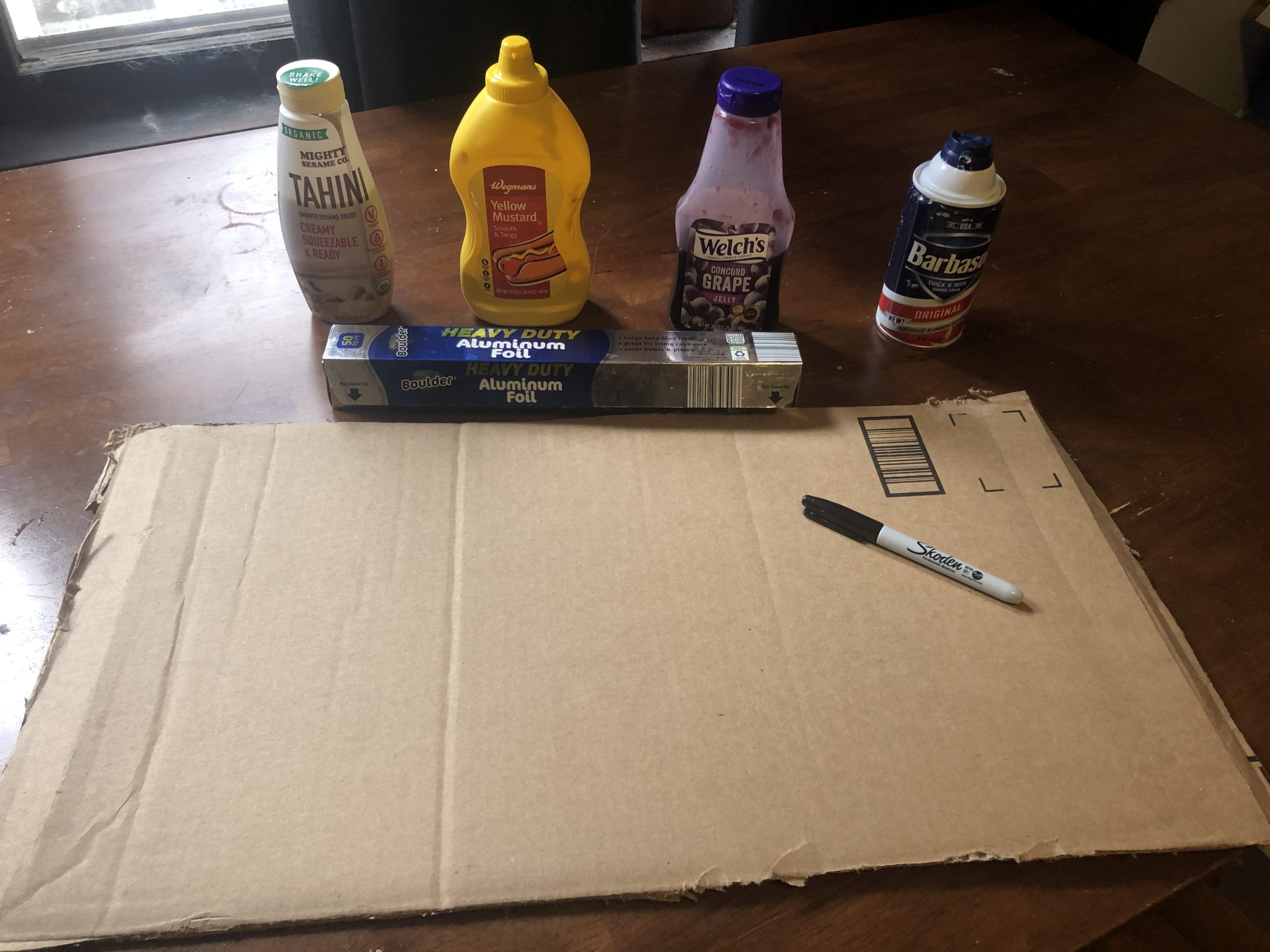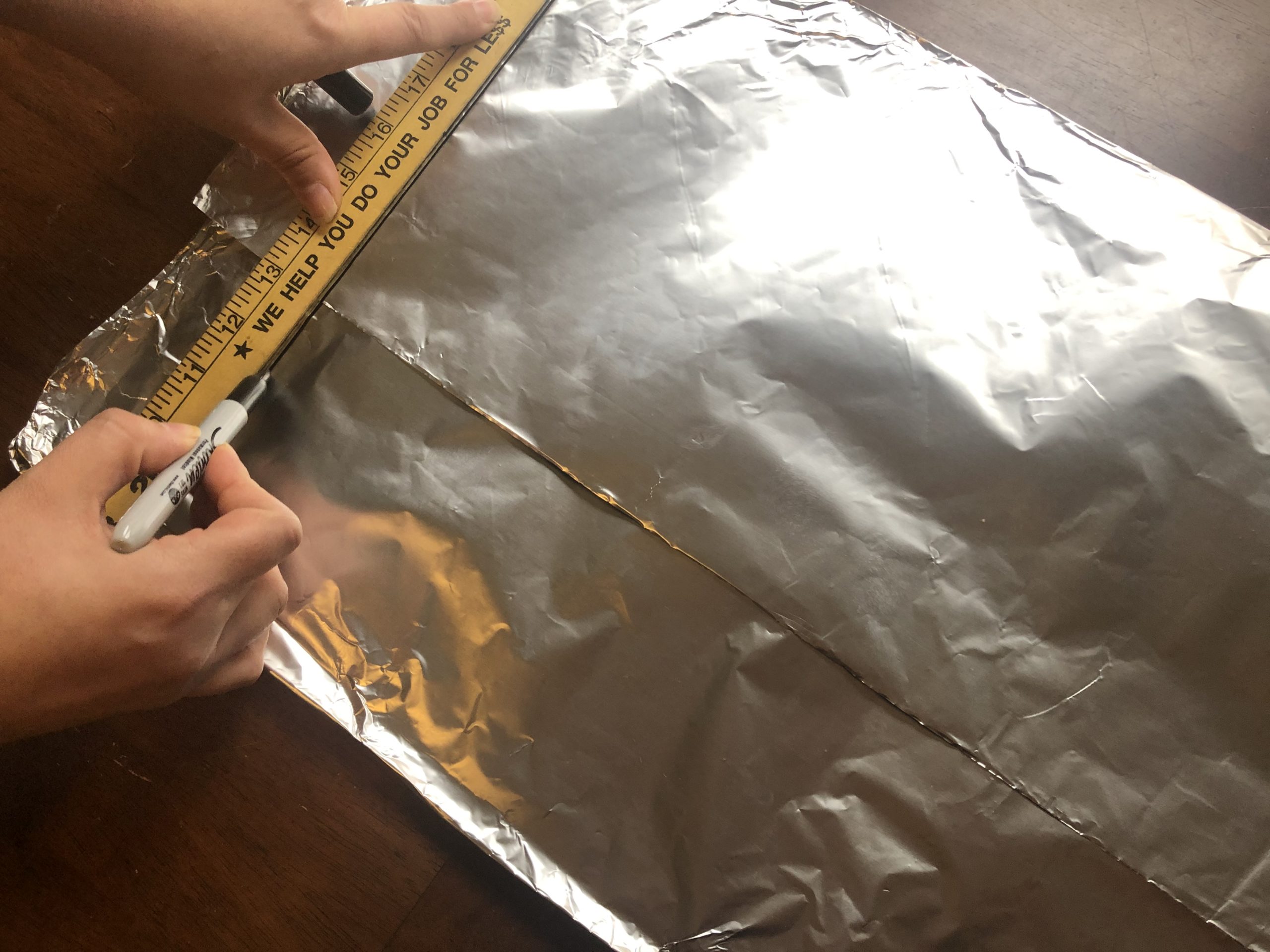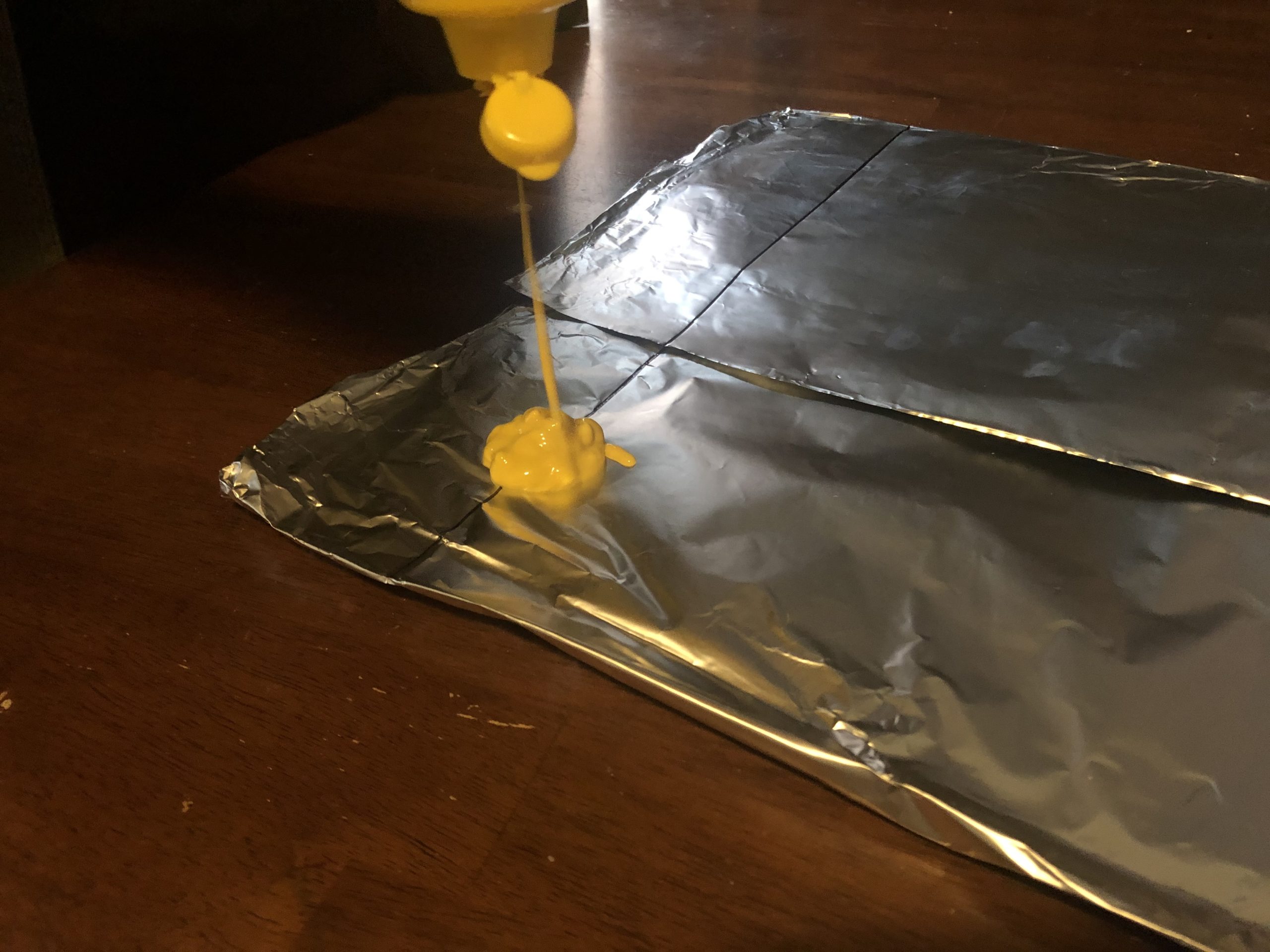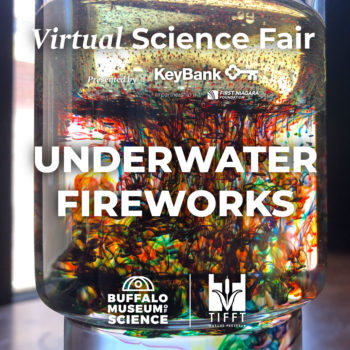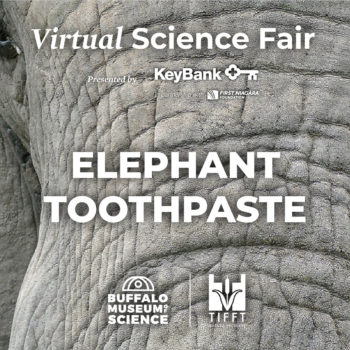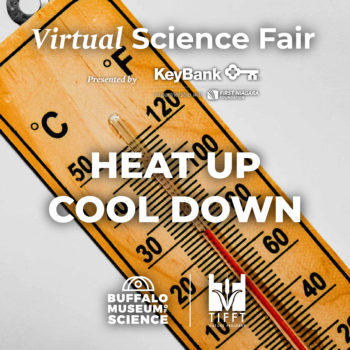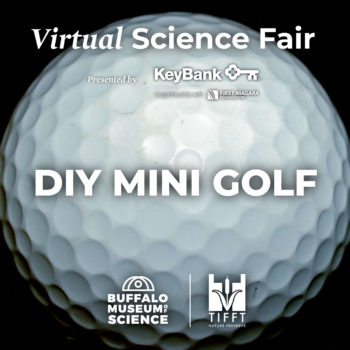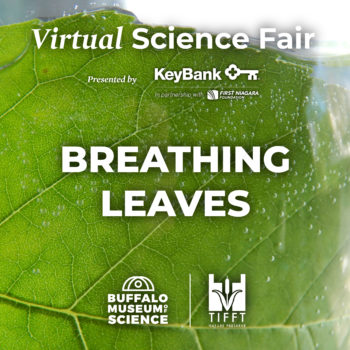Viscosity Races
Have science fun as a family! Complete activities with parental supervision.
Materials:
- A long piece of cardboard (at least 2 feet long)
- Plastic wrap or aluminum foil
- Assorted household liquids or sauces
- Permanent marker
- A ruler or straight edge
- Paper towels, newspaper or a tray to catch any drips
We Used:
- Tahini
- Grape Jelly
- Shaving cream
- Mustard
Procedure
- It is important to start this activity on a flat surface. It can be messy, so make sure to do this somewhere that is easily cleaned, like on a table.
- Take the piece of cardboard and wrap it in the plastic wrap or aluminum foil. This step isn’t necessary, but it will allow you to reuse your cardboard for multiple races.
- Using the straight edge and the permanent marker, make a starting line at one end of the cardboard about 2 inches from the edge of the cardboard.
- On the opposite side of the cardboard, lay down paper towels, newspaper or a tray to catch any potential spills.
- Make observations about the different liquids. How are they different? How are they the same? How do they flow?
- Make a prediction as to how fast the liquids will go. Rank them from fastest to slowest.
- With the cardboard piece lying flat, squirt a quarter-size amount of each of the liquids/sauces on the starting line.
- Lift the cardboard on the side with the starting line to create a ramp. Watch those sauces slide!
- How did the results compare with your prediction?
- If you want to try more liquids, wipe off your ramp or take off the plastic wrap/foil and try it again.
- Be sure to take a picture or video to share in the Facebook comments on the Buffalo Museum of Science or Tifft Nature Preserve pages!
What’s it all about?
Have you ever noticed that some things are hard to mix up? Or that things like ketchup are really hard to get out of a bottle? It’s all about viscosity—a liquid’s resistance to flow. If a liquid is thicker and hard to stir up, it has a high viscosity.
For scientists that study volcanoes (volcanologists), viscosity is very important. Thin, less viscous lava can flow like rivers. But thick, more viscous lava can be explosive!
Try It!
There are some other factors that could have influenced your experiment. Did all of the liquids weigh the same? Did they take up the same amount of space? Brainstorm ways to redesign the experiment to make it as far as possible!
